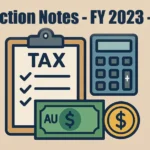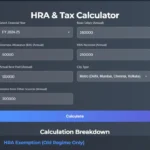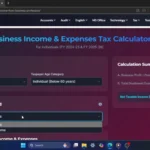Q.no.1. Write about the concept and objective of documentation as per SA 230?
A. Meaning:
i. Audit Documentation refers to the record of audit procedures performed, relevant audit evidence obtained, and conclusions the auditor reached.
ii. Audit Document also called as Workpaper or Audit Files
B. Objective of the Auditor:
Objective of the auditor is to prepare Audit documentation that provides:
i. Sufficient and Appropriate record for the auditor’s report and
ii. Evidence that the audit was planned and performed in accordance with SAs and applicable legal and regulatory requirements.
Q.no.2. Write about nature and purpose of documentation as per SA 230?
A. Nature of Audit Documentation:
i. Audit Documentation is an Evidence for the auditor to achieve and conclude overall objectives of the auditor; and
ii. Audit Documentation is an Evidence that the audit was planned and performed in accordance with SAs and applicable legal and regulatory requirements.
B. Purpose of audit documentation:
i. Assist engagement team to plan and perform the audit for future audit.
ii. Assist engagement team to direct and supervise the audit work,
iii. Enabling engagement team to be accountable for their work.
iv. Enabling to conduct quality control reviews and inspections in accordance with SQC 1.
v. Enabling to conduct external inspections in accordance with applicable legal, regulatory or other requirements.
Q.no.3. Write about form, content and extent of documentation and factors affecting there of?
A. Manner of Documentation:
Audit documentation shall be in such a way an experienced auditor, having no previous connection with the audit, shall able to understand:
i. Nature, Timing and Extent of the audit procedures performed.
ii. Results of the audit procedures performed and the audit evidence obtained.
iii. Significant matters arising during the audit and the conclusions reached.
iv. Significant professional judgements made for reaching those conclusions.
Experienced Auditor means:
A person who has a reasonable knowledge of:
i. Applicable financial reporting Framework,
ii. Accounting standards,
iii. Auditing standards and
iv. Knowledge of clients’ business.
B. Documentation of Nature, Timing and Extent of Audit procedures:
i. Tests performed: Identifying characteristics of the specific items or matters tested.
ii. Performed by whom: Who performed the audit work and the date such Audit work was completed.
iii. Review by whom: Who reviewed the audit work and the date and extent of such review.
iv. Significant matters: Auditor shall document discussions of significant matters with management, those charged with governance, and others, including: the nature of the significant matters discussed and when and with whom the discussions took place.
V. Inconsistencies: If the auditor identified information that is inconsistent
with the auditor’s final conclusion regarding a significant matter, the auditor shall document how the auditor addressed the inconsistency.
Factors affecting form, content and extent of documentation:
i. Size and complexity of the entity.
ii. Nature of the audit procedures to be performed.
iii. Risks of material misstatement.
iv. Significance of the audit evidence obtained.
v. Nature and extent of exceptions identified.
vi. Need to document the conclusion or basis for the conclusion.
vii. Audit methodology and tools used.
Q.no.4. Write about examples of audit documentation?
A. Audit Documentation includes:
Audit documentation may be recorded on paper or on electronic or other media.
Example of Audit Documentation includes:
i. Audit programmes.
ii. Analyses.
iii. Issues memoranda (Query Sheet)
iv. Summaries of significant matters.
v. Letters of confirmation and representation.
vi. Checklists.
vii. Correspondence (including e-mail) concerning significant matters.
B. Copies of Entities Records:
i. Auditor may include copies of the entity’s records (for example, significant and specific contracts and agreements) as part of audit documentation.
ii. Audit documentation is not a substitute for the entity’s accounting records.
C. Audit documentation does not include:
i. Superseded drafts of working papers and financial statements,
ii. Notes that reflect incomplete or preliminary thinking,
iii. Previous copies of documents corrected for typographical or other errors, and
Duplicates of documents.
Q.no.5. Write about timely preparation and assembly of audit documentation and also about audit file?
A. Audit File:
Audit File may be recorded on paper or on electronic storage or other media, containing the records that comprise the audit documentation for a specific engagement.
B. Timely Preparation of Audit Documentation:
i. Preparing sufficient and appropriate audit documentation on a timely basis helps:
- To enhance the quality of the audit and
- To facilitates the effective review and evaluation of the audit.
ii. Documentation prepared after the audit work performed is likely to be less accurate than the documentation prepared at the time audit work performed.
C. Assembly of the Final Audit File:
i. Timely Basis: Auditor shall assemble the audit documentation in a final audit file on a timely basis after the date of the auditor’s report.
ii. SQC Requirement for Policies and Procedures: SQC 1 “Quality Control for Firms that perform Audits and Review of Historical Financial Information, and other Assurance and related services”,
SQC 1 Requires firms to establish policies and procedures for timely completion of assembling the audit files.
iii. 60 Days’ Time Limit: Assembly of final audit file not be more than 60 days after the date of the auditor’s report.
iv. Administrative Process: Assembling the final audit file after the date of the auditor’s report is an administrative process that does not involve the performance of new audit procedures or the drawing of new conclusions.
Examples:
i. Deleting or discarding superseded documentation.
ii. Sorting, collating and cross-referencing the working papers.
iii. Signing off on completion checklists relating to the file assembly process.
iv. Documenting audit evidence that the auditor has obtained, discussed and agreed with the relevant members of the engagement team before the date of the auditor’s report.
D. Retention of audit documentation:
i. After completion of assembly the final audit file, the auditor shall not delete or discard audit documentation before the end of its retention period.
ii. Auditor shall retain Audit documents no shorter than 7 years from the date of the auditor’s report, or, the date of the group auditor’s report, whichever is later
iii. SQC 1 requires firms to establish policies and procedures for the retention of engagement documentation.
E. Ownership of Audit Documentation:
i. SQC 1 provides that, unless otherwise specified by law or regulation, audit documentation is the property of the auditor.
ii. Even Audit Documentation of Branch Auditor and Internal Auditor are the property of their own, they are not bound to share Audit Documentation with External Statutory Auditor.
iii. Auditor may share parts of the audit documentation with clients if it doesn’t compromise the work’s integrity or the auditor’s independence.
Q.no.6. Write about documentation of significant matters and related significant professional judgments?
A. Documentation of significant matters:
i. Judging the significant matters requires an objective analysis of the facts and circumstances.
ii. Examples of significant matters:
a. Matters that give rise to significant risks.
b. Results of audit procedures indicating:
– Financial statements could be materially misstated, or
– Need to revise the auditor’s previous assessment of the risks of material misstatement and the auditor’s responses to those risks.
iii. Circumstances that cause significant difficulty in applying audit procedures.
iv. Findings that could result in a modification to the audit opinion.
B. Documentation related to professional judgment:
i. Audit documentation of significant matters where professional judgment exercised while performing the work and evaluating the results.
ii. Documentation of the professional judgments that explain how the auditor reached conclusion and to prove the quality of auditor’s judgment.
iii. Auditor must document their professional judgment for the following significant matters, such as:
a. Explaining their reasoning when they must consider specific information for the audit.
(E.g., Reliance company changes useful life of 90% of fixed assets during FY 2018 – 2019 and here the auditor can document the information about number of years, reasons for changes in useful life etc.)
b. Basis for the auditor’s conclusion on subjective judgment areas.
(E.g., the reasonableness of significant accounting estimates).
c. Detailing their findings on a document’s authenticity after further investigation.
Q.no.7. Write about audit summary memorandum?
i. Auditor may consider it helpful to prepare and retain the audit documentation summary as part of the audit record. (Sometimes known as a completion memorandum) that describes:
a. Significant matters identified during the audit and
b. How they were addressed.
ii. Such summary may facilitate efficient and effective review and inspection of the audit documentation, particularly for large and complex audits.
iii. It may also help the auditor whether there is any individual relevant SA objective that the auditor cannot achieve that would prevent from achieving overall audit objectives.










